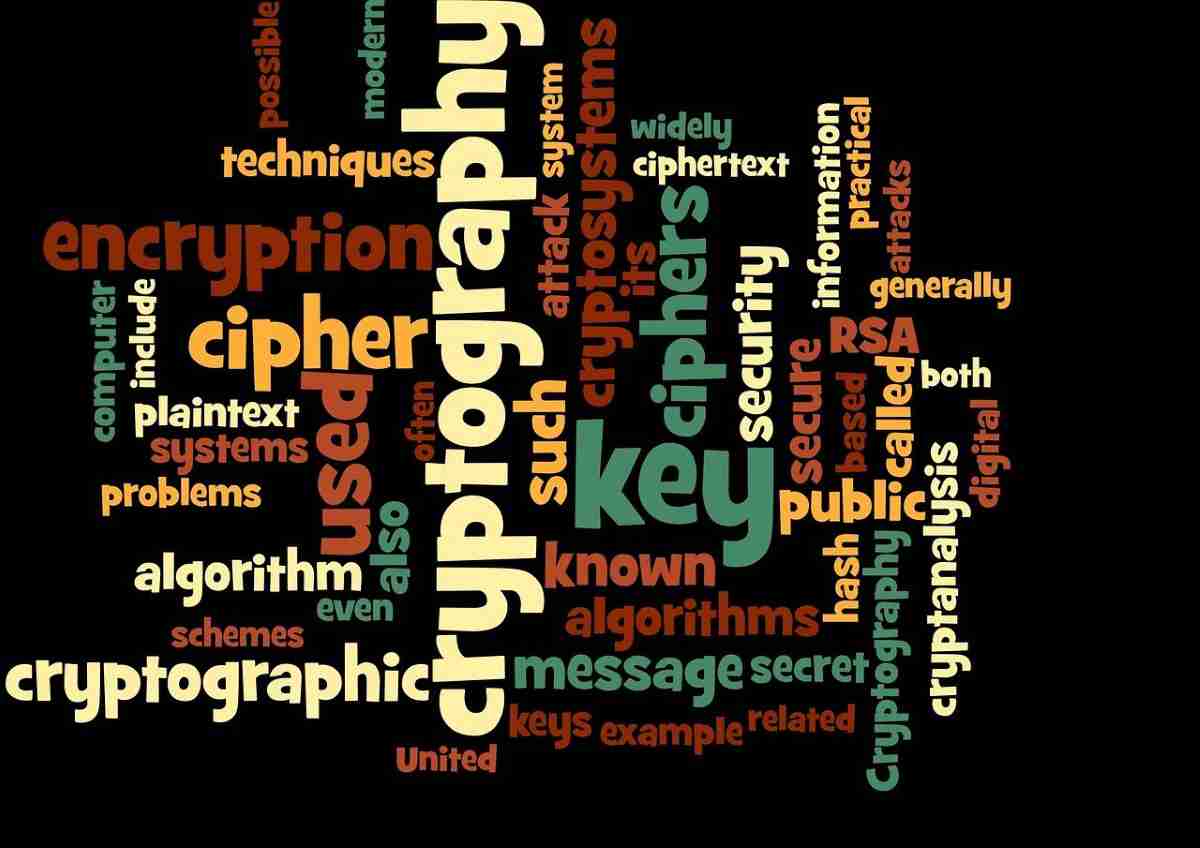This section contains all of our cryptography-related materials. When you enter or save sensitive personal data on a website, are you concerned about its security? If you value data security, you must use cryptography. The fascinating field of cryptography can be explored with a straightforward cryptography chart. Any reader can benefit from this article. Is that all there is to it?

1. What is Cryptography?
The art of cryptography is the open dissemination of previously unattainable data. The Greek roots of the English word “crypto” are the noun “hidden” (kryptos) and the verb “writing” (graphein). The purpose of cryptography is to ensure that only authorized parties can read transmitted messages.
There are many examples of cryptography’s use throughout human history. Passwords and credit card numbers are two examples of sensitive data that could be compromised without encryption. Among the many technologies that rely heavily on cryptography are blockchain, SSL/TLS (Secure Sockets Layer/Transport Layer Security) protocols, and VPNs.
2. Cryptography Methods
Symmetric and asymmetric cryptography exist. This section goes into more detail about these strategies.
2.1. Symmetric Encryption
Data security measures known as “symmetric encryption” encrypt and decrypt with the same key. Since the key exchange is hidden, all conversations are secure. This method’s speed and simplicity make it ideal for encrypting massive datasets.
The Advanced Encryption Standard (AES) is a solid option for protecting sensitive information. Its already high level of security is bolstered by the fact that it supports extremely long keys, such as 128 bits, 192 bits, and 256 bits.
2.2. Asymmetric Encryption
In asymmetric encryption, also known as public-key encryption, data is encrypted and decrypted with the help of two keys. The public key can be seen by anyone, but the private key is kept secret. Only the person who has the private key that goes with a certain public key can decrypt the data.
This method lets two people talk to each other without agreeing on a secret key ahead of time. Digital signatures and encrypted email are all made possible by this technology.
The most common algorithms are the Rivest-Shamir-Adleman (RSA) algorithm, the Digital Signature Algorithm (DSA), and elliptic curve cryptography (ECC).
3. Cryptographic Hash Functions
The hash value, or checksum, is made by a mathematical function called a cryptographic hash function. This function can accept messages. Its cryptographic uses are checking data integrity, storing passwords, and making digital signatures.
4. Properties of Cryptographic Hash Functions
Deterministic: No matter what data is put into a deterministic hash function, it will always produce the same hash value. This property is used a lot in the verification process.
Pre-image resistance: When all that is left is the hash value, it is mathematically impossible to figure out the original message. This is called “pre-image resistance.” From the hash value, it will likely be hard to determine the original message.
Collision resistance: To avoid collisions, a cryptographic hash function must turn two different inputs into hash values that are truly different. This feature makes it much less likely that a security breach will happen because no two messages can have the same hash value.
5. Commonly Used Hash Functions
Secure Hash Algorithm 256 (SHA-256), Message Digest Algorithm 5 (MD5), and Secure Hash Algorithm 3 (SHA-3) are all well-known cryptographic hash functions. MD5 is considered less safe than SHA-256, widely used in blockchain technology.
6. Cryptography Chart
For people just starting out with cryptography, this table of the most basic methods and protocols will be helpful and teach them a lot. Both newcomers and seasoned professionals can use this chart. This is where the graph is shown.
7. Conclusion
Modern security systems can only work with cryptography. Hackers can’t listen in on private conversations or steal sensitive information. This article discussed the basics of encryption, including well-known algorithms and symmetric and asymmetric techniques. This chart is helpful for people who want to learn more about cryptography.
When learning about cryptography, starting with the basics of secure communication protocols, the different kinds of cryptographic algorithms, and the most recent changes in the field is a good idea. If you want to keep your data safe in today’s digital world, you need to stay up-to-date on the latest developments in cryptography.
8. FAQs
What is a Cryptography Chart? A Cryptography Chart visually explains encryption techniques for secure data transmission.
- Why use a Cryptography Chart? Cryptography Charts simplify complex encryption methods, aiding in better data protection understanding.
- How does Cryptography enhance security? Cryptography ensures data confidentiality through advanced algorithms, as depicted in the Chart.
- Where can I find a reliable Cryptography Chart? Discover a trustworthy Cryptography Chart at our platform, offering insights into encryption fundamentals.
Is a Cryptography Chart suitable for beginners? Yes, our user-friendly Cryptography Chart serves as an excellent starting point for grasping encryption concepts.
[…] Again, one of QM’s more mysterious features is quantum superposition. Particles are considered to be able to exist in a superposition of states until they are measured, according to this theory. It’s easy to dismiss this idea as science fiction, but it could have profound consequences for fields as diverse as teleportation, quantum computing, and cryptography. […]